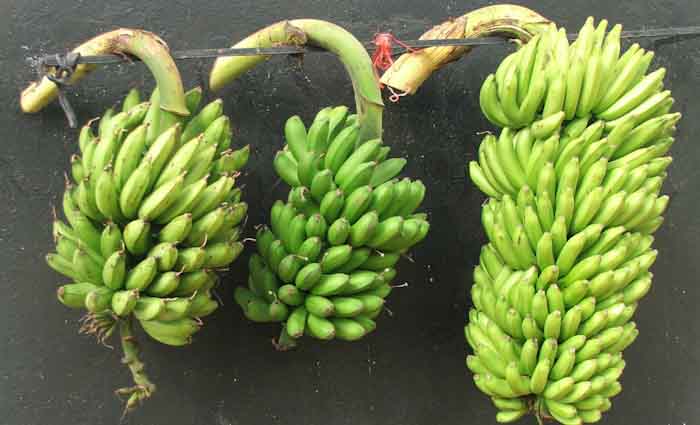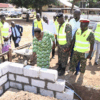News
Researchers map genes for bunch size in bananas

High-yielding Narita 10 hybrid, on the right, compared to its parents. B. Uwimana (IITA)
Researchers have identified for the first time genetic markers that are responsible for influencing the size and weight of bananas.
Researchers from the Roots Tubers and Bananas (RTB), a project of the Consultative Group on International Agricultural Research (CGIAR), say the discovery will ease research meant to increase yield in bananas.
“This will help speed up breeding programs, as researchers will be able to identify high-yielding hybrids before growing them out. Unproductive hybrids can be discarded early, allowing breeders to concentrate on finding the bananas with other promising traits as well.”
Applying genomic approaches to develop molecular markers for complex traits such as yield can help increase the efficiency of RTB breeding programs.
One of the main goals of many banana breeding programs is to increase the bunch weight of bananas (boosting yields). New research from IITA, the Institute of Experimental Botany (Czeck Republic), and the Swedish University of Agricultural Sciences has applied genomic approaches to find the genetic markers associated with bunch weight in bananas. This can help eliminate many progenies earlier in the breeding program, allowing scientists to concentrate sooner on the more promising ones.
This is the first time ever that anyone has located the genomic loci associated with bunch weight and related traits, like the number and size of fruit, says Moses Nyine, who led the study.
Geneticists have known since the 1960s that three genes control much of the variation of fruit size in bananas, but the location and mode of action of these genes remained unclear. This knowledge gap frustrated efforts for breeding disease resistance in bananas, because wild bananas are often disease-resistant, but they also bear just a few fruits, and small ones at that.
So, crosses with wild bananas often resulted in resistant, but low yielding hybrids. As many as 90% of new hybrids had to be grown to maturity and then tediously discarded as breeders appraised the plants to discover which ones bore lots of fruit.
The team carried out a genome-wide association study (GWAS) of banana—a search for genetic markers linked to traits of interest, such as heavy bunches of fruit.
The researchers compared 307 genotypes derived from East African highland bananas in three fields in Uganda, including two that were mulched and fertilized and one that was not (to help understand the role of environment in determining fruit yield).
The team found that bunch weight was highly heritable. After looking at over 27,000 genetic markers, 47 were found to be associated with bunch weight and its component traits (such as number of hands, and fruit size).
These 47 markers were on 25 genomic loci on five chromosomes, but a single region on chromosome 3 probably bears most of the genes that affect bunch weight.
“Our research suggests that fruit filling is under the control of a few genes, with major effects,” explains Nyine.
Future plant breeders will be able to select hybrids that have these genes, without growing out the whole plant. This will make it easier to concentrate on other desired traits, such as disease resistance and the ability to adapt to climate change.
Comments


















